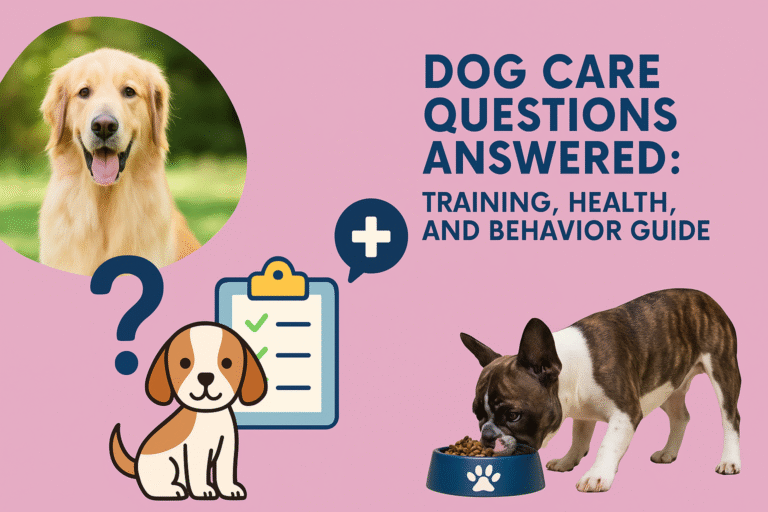Pet Travel Tips: How to Keep Your Dog Safe on the Road or in the Air
Whether you’re setting off on a road trip or catching a flight, traveling with your dog can be an enjoyable and rewarding experience with the right planning. Pet Travel Tips: How to Keep Your Dog Safe on the Road or in the Air focuses on preparation, planning, and practical steps that ensure your dog’s well-being throughout the journey. With the right care, travel becomes a smooth and loving adventure for both of you.
Why Pet Travel Safety Matters
Keeping your pet safe is key to enjoying a smooth and stress-free travel experience. Lack of preparation can result in stress, health issues, or potential harm.From motion sickness to travel delays, being prepared keeps your pet comfortable, secure, and strengthens the bond of trust between you.
Preparing for Travel
Health Check & Documentation
Before setting out, schedule a veterinary check-up. Your dog should be up-to-date on vaccinations, flea/tick treatments, and preventive meds. For air travel especially,
Medication and Supplements
If your dog tends to get anxious or motion-sick, talk to your vet about appropriate travel medications or natural calming aids. BPack all necessary medications along with extra doses in case of unexpected delays.
Selecting the Best Carrier or Restraint
Choose a pet carrier that offers good airflow and has a secure locking mechanism.Make sure the area is spacious enough for your dog to stand, turn easily, and rest comfortably. Add some absorbent material or old, familiar for extra comfort.
Car Restraints and Crates
For car rides, employ a crash-tested seat belt harness or sturdy traveling crate well-secured in the car. These minimize danger of injury on braking and confine the dog’s running around the cabin.
Road Travel: Comfort and Safety Tips

Packing Basics
Bring your dog’s regular food and bottled water, and use portable, collapsible bowls for convenience during travel.
Leash, collar, and ID: Double-check that it’s all on snug and tags are up to date. A microchip provides a backup identification.
Familiar comforts: A special blanket or toy can be used to soothe.
Breaks and Routine
Regular Rest Stops
Stop every 2–3 hours for bathroom stops, stretching and water. A short walk can help reduce your dog’s anxiety and keep their muscles from getting stiff.
Cabin Behavior Tips
If your dog travels in the passenger compartment, they can go in the floor space behind the front seat or in the back seat on a well-fastened harness. Reinforce calm behavior and gentle comfort frequently. Always supervise your dog and avoid leaving them alone, especially in warm weather.
Air Travel: Preparing for the Skies
Flight Choice and Timing
Opt for continuous flights where possible to avoid stress. Steer clear of hottest times or flights with more than one layover. Reserve seats ahead and review any pet policies the airlines provide—weight restrictions and health certificates.
In-cabin vs. Cargo
Small dogs can travel in-cabin when weight restrictions are in place. Big ones usually fly cargo. Cargo travel is more dangerous, so check airline accident records and select temperature-controlled flights if possible.
Airport and In-flight Safety
At the Airport
Arrive early to permit check-in procedures. Take your dog to a designated relief area before going through security. If shipping cargo, label clearly and double-check procedures for dropping them off.
On the Plane
Place your dog’s carrier beneath the seat in front of you to keep them safe and secure during the journey. Speak in soothing calm assurance, but do not open the carrier or touch them while flying. Share calm energy with them so that they feel secure.
Stress-Reducing Tips for Both Modes

Acclimation and Dry Runs
Get your dog acclimated to the harness or carrier well in advance of travel day. TStart with brief trips and make the carrier a positive space by offering treats, toys, and praise to create a comfortable association.
Calming Techniques
Massage, calming music, or pheromone sprays calm nervousness. If your dog will accept a low-dose sedative discussed with your vet, follow instructions carefully and taste test ahead of time.
Documentation and Emergency Planning
Pack copies of pet health records, telephone numbers for veterinarians in your destination area, and emergency numbers. Take a recent photo of your dog in case you become separated—and put ID tags in conspicuous places.
FAQ – Common Questions About Traveling Safely with Your Dog
- Can I give water to my dog while it is being transported?
Yes—give small sips at frequent intervals. - My dog won’t eat.
Adhere to normal diet and don’t feed close to departure time. Fear is a natural reaction; concentrate on hydration and snacks during stops. - Is sedation okay to fly with?
Sedation is stress-reducing but unsafe, particularly for dogs with pre-existing medical conditions. Always ask your vet and try it first in a quiet environment. - What do I do with a layover with a dog?
Select longer layovers if your dog travels cargo so the crew can take them out for a break. Ask for special handling if available, and attempt to use one airline for less complicated coordination. - What are indications my dog is stressed while traveling?
Panting, pacing, whining, drooling, or over-panting to monitor.Anxiety in dogs can often show up as restlessness or an inability to relax.
Comfort and consult your vet in case of extreme symptoms. - How can I ensure my dog’s safety while traveling in the cargo hold?
Use airline-accepted containers with absorbent bedding. Label it clearly and avoid overfeeding. Pick flights in moderate temperatures. Inform staff of your dog’s presence and request them to use pet experience handlers if available.
Conclusion
With the right preparation, traveling with your dog can be a safe, smooth, and pleasant experience. With Pet Travel Tips: How to Keep Your Dog Safe on the Road or in the Air, your dog will be relaxed, healthy, and contented during travel. From promoting veterinarian visits to carrier training, stress-reduction devices, and savvy scheduling, every step promotes trust and minimizes risk.







